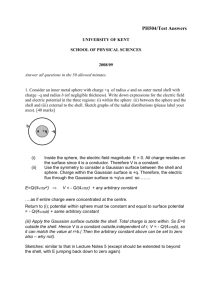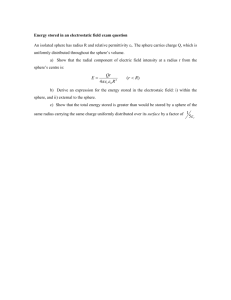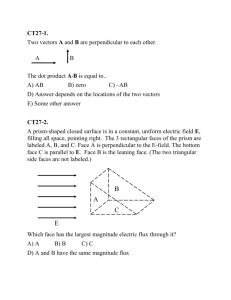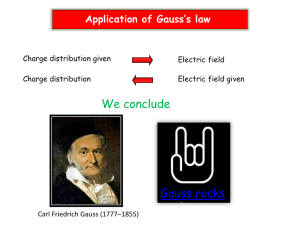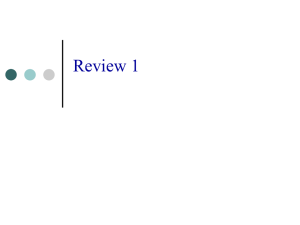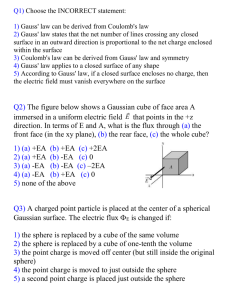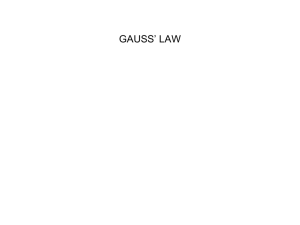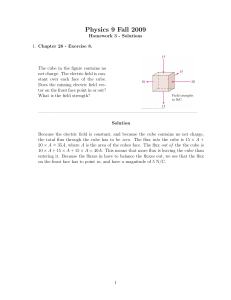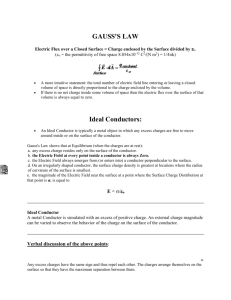Knight27CTc
advertisement
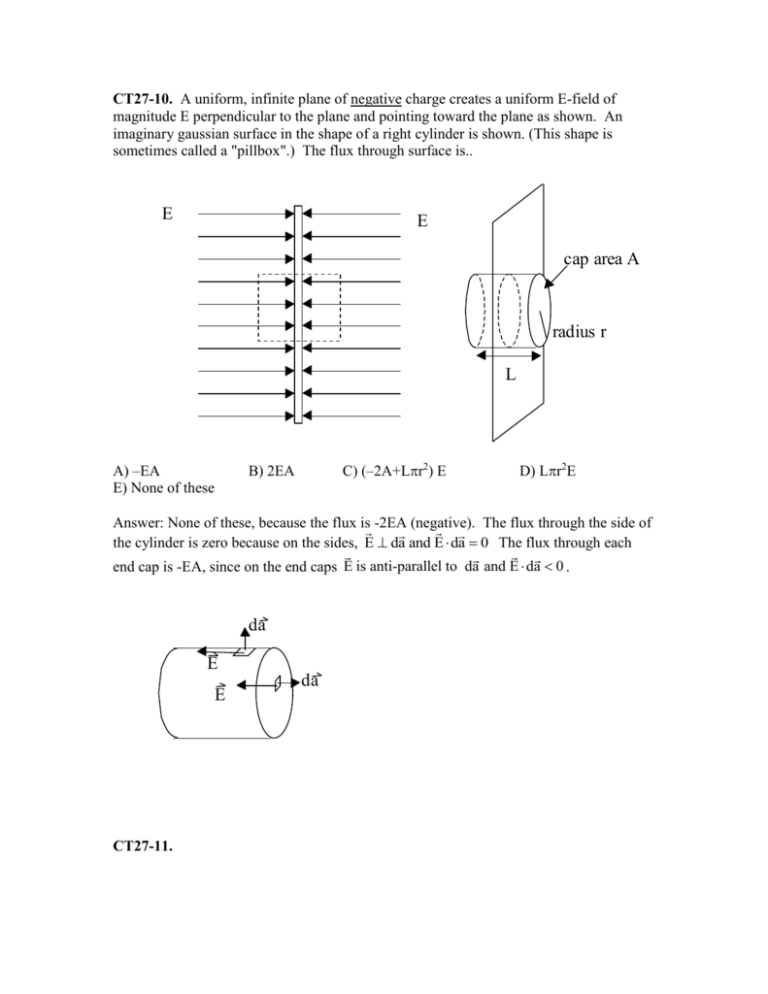
CT27-10. A uniform, infinite plane of negative charge creates a uniform E-field of magnitude E perpendicular to the plane and pointing toward the plane as shown. An imaginary gaussian surface in the shape of a right cylinder is shown. (This shape is sometimes called a "pillbox".) The flux through surface is.. E E cap area A radius r L A) –EA E) None of these C) (–2A+Lr2) E B) 2EA D) Lr2E Answer: None of these, because the flux is -2EA (negative). The flux through the side of the cylinder is zero because on the sides, E da and E da 0 The flux through each end cap is -EA, since on the end caps E is anti-parallel to da and E da 0 . da E E CT27-11. da The non-zero electric field everywhere on a closed surface is constant: r r E = constant (meaning vector E is everywhere constant in magnitude and direction). Is the following calculation correct? r r E òÑ ×da = E òÑda = EA A) Definitely correct B) Definitely incorrect C) Possibly correct, possibly incorrect – depends on details of the surface and E. Answer: Definitely incorrect. It is only true that r r r r r òÑE ×da = E òÑda IF, everywhere on the surface, E || da , and E = E = constant . On any closed surface, r the various da ' s on the surface point in various directions (always along the local outward normal). So if the E-field always points in the same direction (say along the +xaxis) then there is no way the E-field can everywhere be parallel to the r da ' s . CT27-12. A negative point charge with charge -Q sits in the interior of a spherical metal shell. The conducting metal shell has no net charge. What is the total charge on the inner surface of the shell? inner surface outer surface - gaussian surface A) –Q B) +Q C) +2Q D) zero E) Some other answer. Hint: Consider the gaussian surface shown. Answer: +Q Answer: Apply Gauss's law to the gaussian surface shown, E da Q in / o 0 , since E=0 everywhere on the surface, inside the metal. So there must be a +Q on the inside surface, canceling the -Q point charge, making Qenclosed=0. What is the total charge on the exterior surface of the shell? A) –Q B) +Q C) +2Q D) zero E) Some other answer. Answer: -Q Since the net charge on the metal shell is zero, if there is +Q on the inside surface, there must be -Q on the outside surface. The field lines looks like this: E=0 (inside) CT27-13. A sphere of radius R has a total charge +Q spread uniformly throughout its volume. The charge density is Q . (The sphere must be an (4 / 3) R 3 insulator, because it can't be a metal. Why not?) We are going to compute the electric field magnitude E within the sphere. What is the charge enclosed by the centered small sphere of radius r? A) Q(4/3)r3 R3 D) Q 3 r r2 B) Q 2 R r3 C) Q 3 R E) None of these. If the electric field at distance r from the center of the sphere has magnitude E, what is the flux z E da through the small sphere, radius r? 2 A) E(R ) D) E(4/3)r2 B) E(r2) E) None of these. C) E(4R2) Within the sphere, the electric field magnitude E is proportional to A) r B) r2 C) r3 D) None of these, E=constant within the sphere. E) None of these, E=0 within the sphere. R r Answers: r3 Part 1: The charge in the little sphere is Q 3 . The charge inside the small sphere is Q R times the fraction of the total volume in the small sphere = Q (4 / 3) r 3 r3 . Q (4 / 3) r 3 R3 Part 2: None of these! The flux thru the small sphere is E(4r2) = (field at small sphere) times (area of small sphere). Part 3: Inside the sphere, E r. Gauss's Law says E da Q in / o r3 1 E(4r ) Q 3 R o 2 Solving for E gives E F Q I G H4R J Kr, 3 for r R . o It is easy to show, from Gauss's Law, that, outside the big sphere, r > R, the E-field is just that due to a point charge Q, E Q 4 o R 2 E ~r ~ 1/r2 r R



